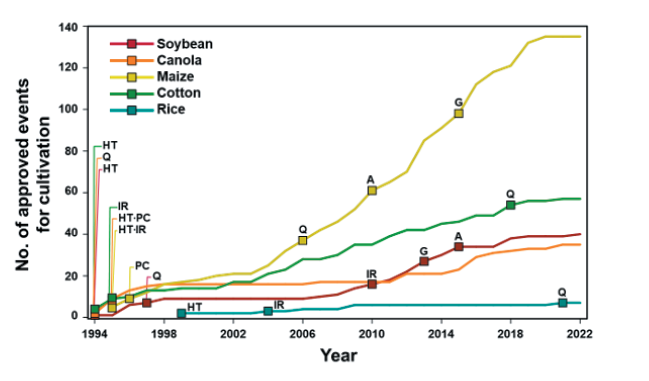Abstract
Natural hybridization between genetically modified (GM) crops and their relatives is the first gateway for introgression to the ecosystem and consequent environmental risk. Therefore, we review the related information on transgene flow from GM crops to their relatives in the Korean ecosystem, such as introduced traits, reproductive characteristics, endemic relatives, and the gene flow occurrence of major GM crops. Besides non-GM cultivars, wild soybean, seven Brassicaceae species, and weedy rice are distributed nationwide in Korea. The maximum gene flow rate from GM to wild soybean was reported at 0.292%. The maximum gene flow rates from GM oilseed rape to Brassica juncea and Brassica rapa were 0.076% and 1.2%, respectively. The hybridization rate from GM to weedy rice was generally less than 0.05% but ranged up to 4.2%. Because there are no wild or weedy relatives of GM maize and cotton in Korea, the gene flow to their relatives is expected to be relatively low. Our review suggests that the transgenes of GM soybean, oilseed rape, and rice can be introgressed into their cultivated, wild or weedy relatives by pollen-mediated gene flow, and may persist in the ecosystem depending on the fitness of the hybrid progenies.
Figures & Tables

Fig. 1.Number of approvals for cultivation of major GM crops until 2022. The squares indicate the year when the novel trait was approved in each GM crops. HT, herbicide tolerance; IR, insect resistance; Q, modified product quality; PC, pollination system control; A, abiotic stress tolerance; G, altered growth/yield.


